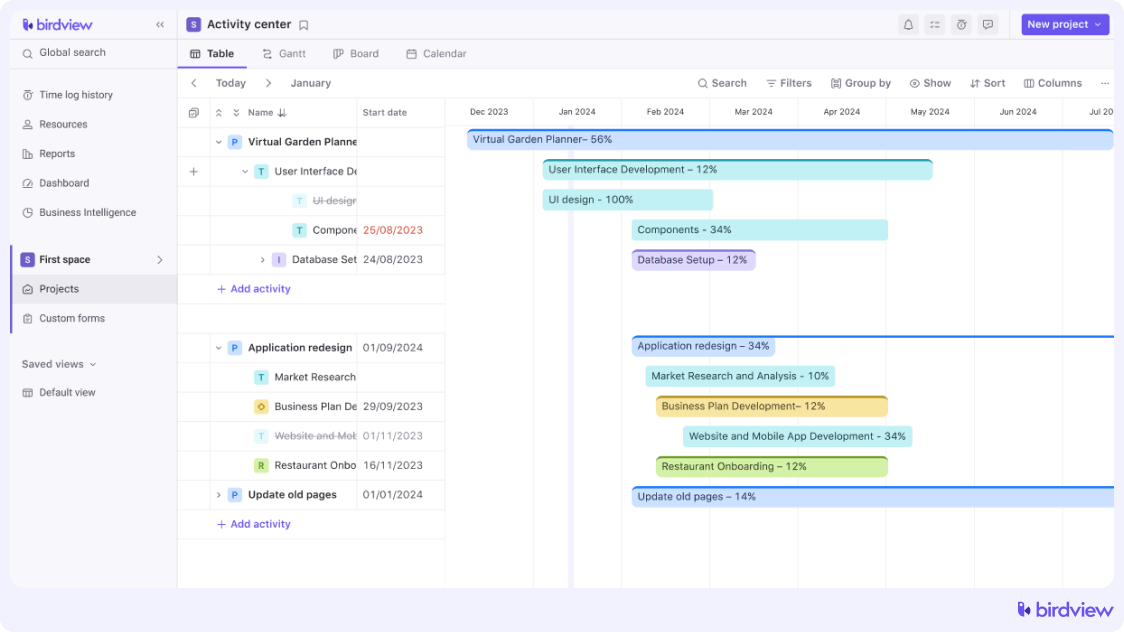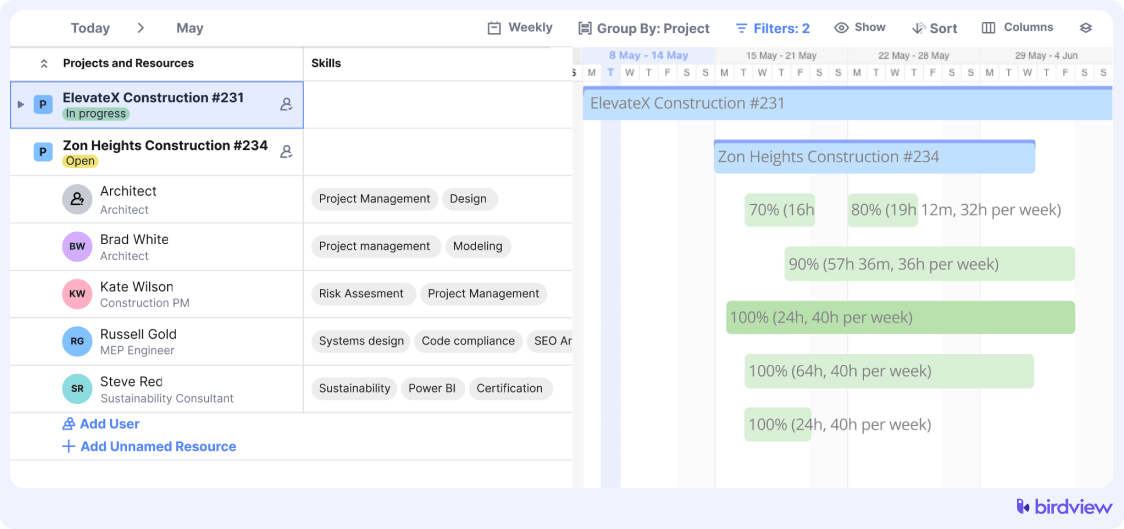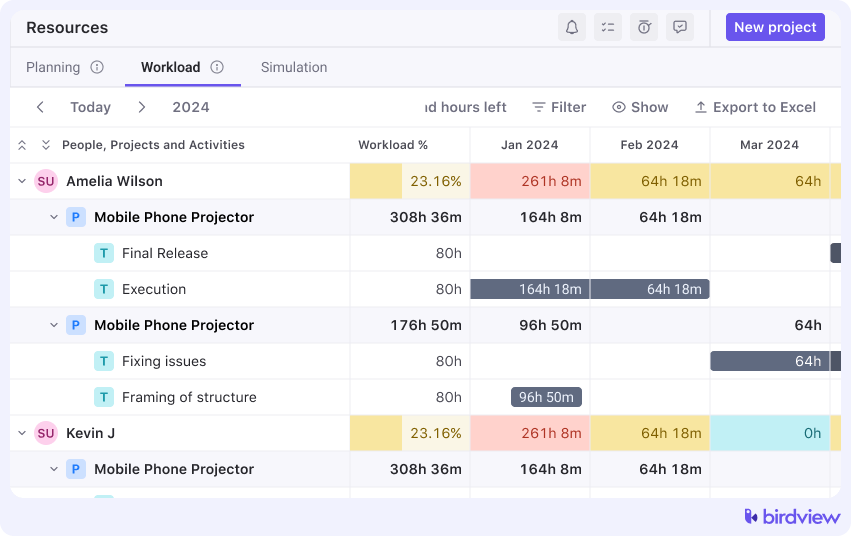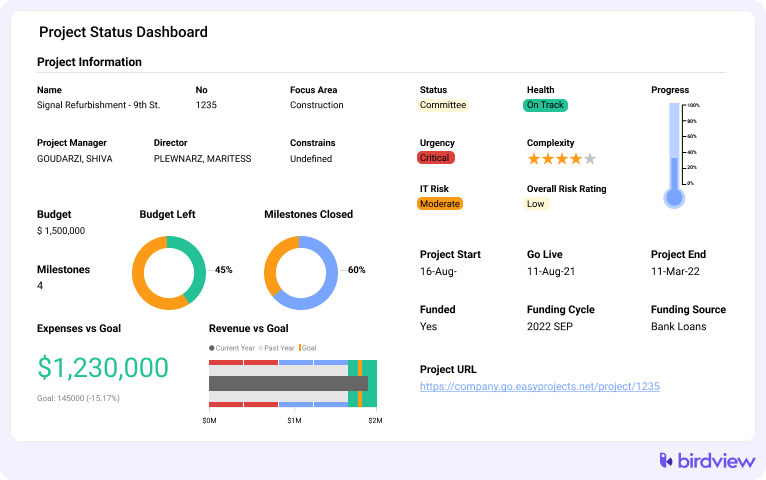The DICE framework is a tool to help assess how likely a change management initiative or project is to succeed. It was developed by the Boston Consulting Group, a management consulting firm, in the mid-1990s to develop a more effective approach to change management. Over a thousand companies and PMOs have adopted DICE since.
How do I compute DICE?
DICE works by measuring four factors, each of which is a letter of the acronym:
- Duration: This is the duration of the project is measured. In addition to measuring an entire project, this can either be the total duration of several shorter projects or the time between two milestones of a larger project. Birdview’s project management software allows project managers to easily monitor and adjust timelines, ensuring that project durations are accurately tracked and optimized.

- Integrity: “Integrity” is a rating of the organization or team‘s ability to complete projects on time and/or their skill relative to the project‘s requirements. With Birdview, project managers can analyze team performance metrics and resource allocation, helping to maintain high integrity levels across all tasks.

- Commitment: Here, the senior managers (C1) and employees (C2) are rated separately on their commitment to making the change happen.
- Effort: This takes into account the actual effort that employees need to exert in addition to their current workload. Birdview‘s workload management features provide insights into team capacity and effort distribution, ensuring that no team member is overwhelmed, which helps maintain a balanced and realistic effort estimation.

Each factor is given a rating of 1 to 4, with 1 being the most optimistic rating, and 4 being the most pessimistic. The actual DICE equation is:
DICE Project Score = D + (2 x I) + (2 x C1) + C2 + E
How do I use DICE?
The results are divided into different categories based on potential risk. The categories are divided into the following zones:
Win Zone: Projects with a score of 7 to 14 are very likely to succeed.
Worry Zone: Projects between 14 to 17 are risky, and need immediate action to attenuate the risk.
Woe Zone: Projects that score over 17 are highly likely to fail, and need decisive action if they are to be salvaged.
Because you get a hard number at the end of a DICE review, you‘re able to do an objective comparison of this project or phase with other projects with a DICE rating. You can even track a project‘s score over time to see if any procedural or organizational changes you make are effective.
DICE Pros
As I already mentioned, having a hard number makes it easier to compare scores with other projects or phases being measured. This also makes it easier to communicate project risk to other parties who may not be as familiar with the project and more easily influences their decisions on the project’s resources or project schedule. Birdview further enhances this by providing customizable reporting tools that can translate these scores into visually intuitive dashboards, making it easier to present risk assessments to stakeholders.

DICE Cons
Despite the use of hard numbers, the DICE equation is based entirely on subjective factors, and two people may rate the same project differently. Also, DICE only uses the four elements above and doesn‘t consider other “soft” factors, like motivation, management leadership, and organizational culture.
But even with these setbacks, DICE provides at least some way to predict and assess the risks involved with change management. The more you use DICE in your change management projects, the better you‘ll get at rating the different factors, and the more accurate your DICE project scores will become.



